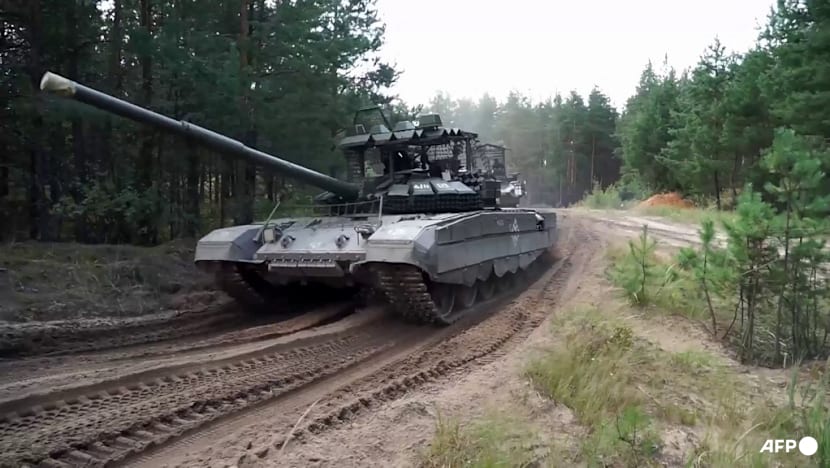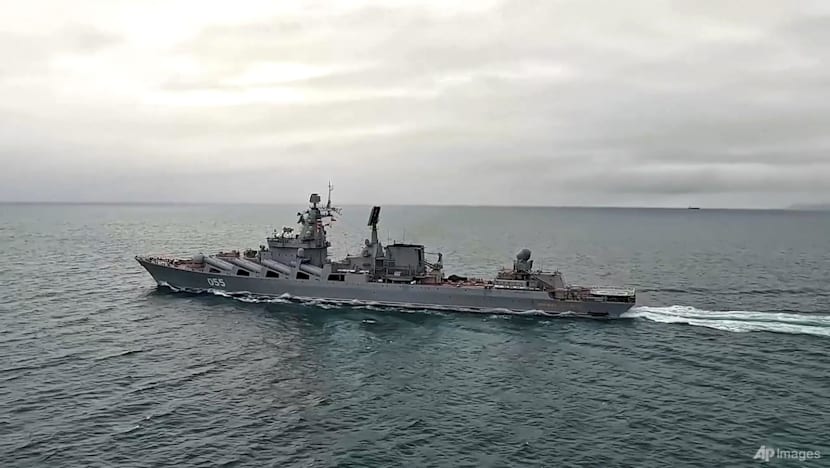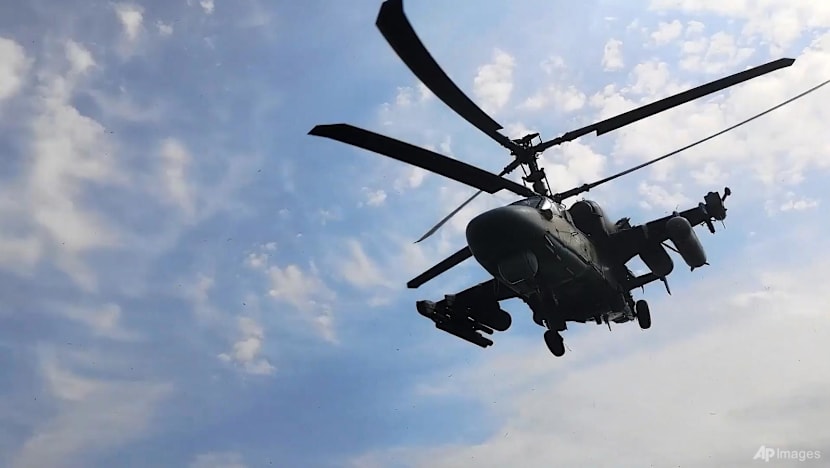Russia, Belarus start military drills as West watches warily

This video grab taken from a handout footage released by the Russian Defence Ministry on Sep 12, 2025, shows Russian Armed Forces taking part in the Zapad-2025 (West-2025) joint military drills of the armed forces of the Russian Federation and the Republic of Belarus at an undisclosed location. (Photo: AFP/Handout / Russian Defence Ministry)
MOSCOW: Russia and its key ally Belarus began major joint military drills early on Friday (Sep 12), putting NATO on edge days after Poland accused Moscow of escalating tensions by firing attack drones through its airspace.
The "Zapad" exercises come as Russian forces grind across the sprawling front line in Ukraine and escalate aerial attacks on Ukrainian cities.
The Russian defence ministry posted a video showing heavy military equipment - including armoured vehicles, helicopters and navy ships - taking part in the drills.
It said aerial reconnaissance and missile strikes on ground targets would be among the manoeuvres rehearsed.
Russia also said it had deployed ships from its Northern Fleet in the Barents Sea and the northern regions of the Arctic Ocean for the exercises.

NATO's eastern flank members that border Russia and Belarus are on high alert over the drills, some of which will be held in Belarus's Grodno region bordering Poland and Lithuania, Minsk said.
Both EU countries have ramped up security. Poland closed its border with Belarus overnight until further notice.
Polish Prime Minister Donald Tusk said Warsaw was closer to "open conflict" than at any point since World War II after Poland and its NATO allies scrambled jets to down Russian drones violating its airspace early on Wednesday.
Poland - which holds its own joint drills with NATO allies coinciding with Zapad - said it would have around 40,000 troops at the border when Russia and Belarus hold their exercises.
Moscow has downplayed the concerns.
"These are planned exercises, they are not aimed against anyone," Kremlin spokesman Dmitry Peskov told reporters Thursday, rejecting Poland's claim that the drills were an "aggressive" show of force.
Ukraine's President Volodymyr Zelenskyy said: "The meaning of such actions by Russia is definitely not defensive and is directed precisely against not only Ukraine".
Russia said it had intercepted 221 Ukrainian drones over its territory overnight.
COLD WAR ANALOGY
Usually held every four years, the 2025 iteration of Zapad is the first during the conflict in Ukraine, and is to run until Sep 16.
Moscow sent around 200,000 troops to similar drills in 2021, just months before it launched its Ukraine offensive.
But this year's Zapad is expected to be much smaller, since hundreds of thousands of Russian troops are deployed in Ukraine.
Belarus had said in January that 13,000 troops would be involved but in May it said the number was to be cut by around half.
According to Tusk, the exercises are designed to simulate the occupation of the Suwalki corridor, a geographical gap that stretches along the border between Poland and Lithuania, flanked by Belarus and the Russian exclave of Kaliningrad.
The corridor is considered a vulnerability for NATO and could potentially be the first target of any Russian attack.

Belarusian President Alexander Lukashenko has dismissed that fear as "utter nonsense".
But Poland has nonetheless shut its few remaining border crossings with Belarus, drawing criticism from Moscow and Minsk who said the move is "primarily directed against Poland itself."
Poland also restricted air traffic along its eastern border. Lithuania and Latvia too have announced partial airspace closures.
Russia's stationing of tactical nuclear weapons in Belarus has given the drills a new dimension.
Minsk has said the exercises would involve Russia's new experimental nuclear-capable missile, dubbed Oreshnik, as well as nuclear strike training.
Vassily Kashin, a military analyst and member of the Kremlin-linked Russian International Affairs Council, said the exercises were "both a demonstration and real combat training".
As Poland and its allies planned were holding their own counter-drills, he added that the practice of rival drills by Russia and NATO at the same time was probably here to stay, "just as it was during the Cold War".














